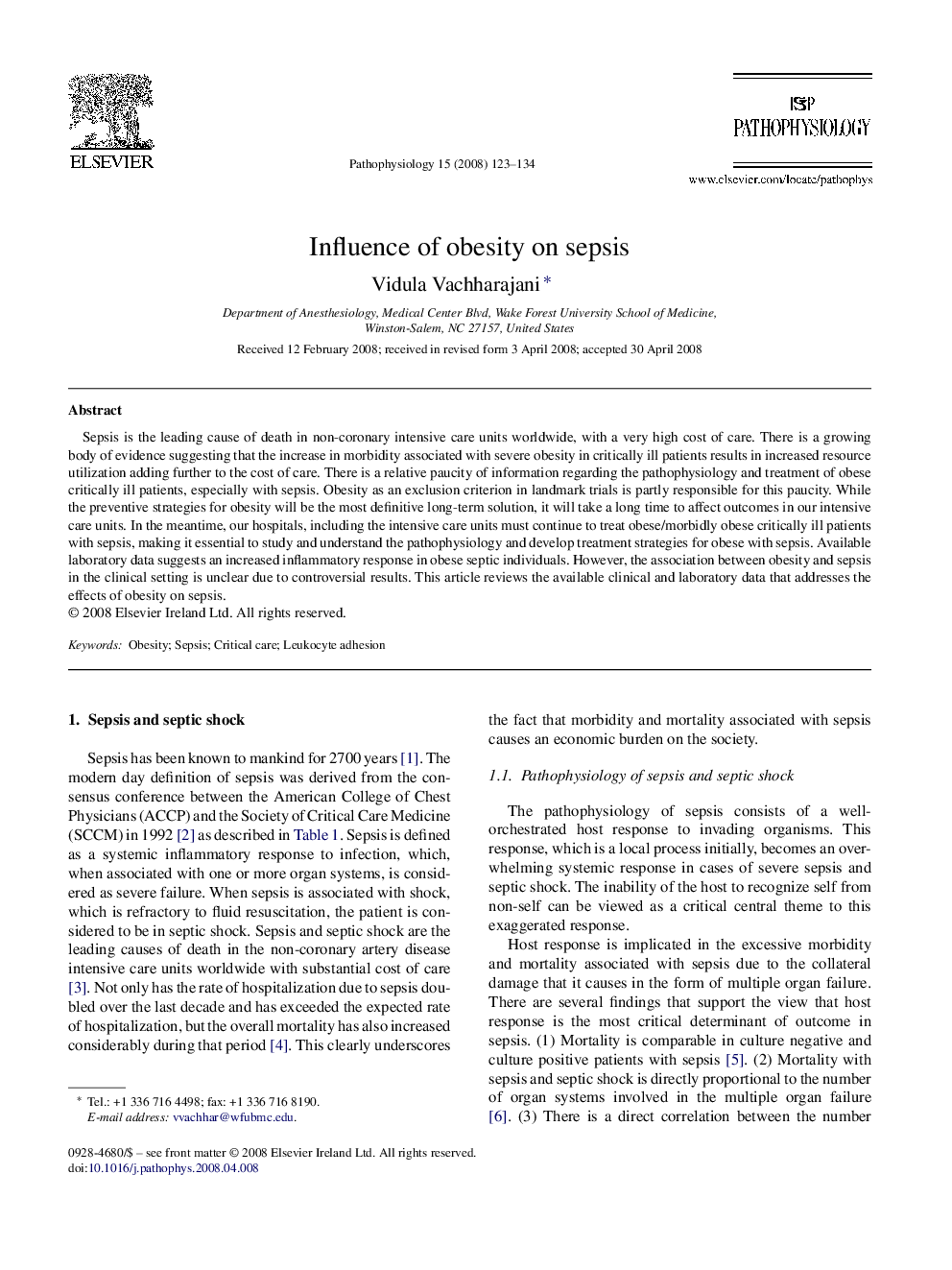| Article ID | Journal | Published Year | Pages | File Type |
|---|---|---|---|---|
| 4137321 | Pathophysiology | 2008 | 12 Pages |
Sepsis is the leading cause of death in non-coronary intensive care units worldwide, with a very high cost of care. There is a growing body of evidence suggesting that the increase in morbidity associated with severe obesity in critically ill patients results in increased resource utilization adding further to the cost of care. There is a relative paucity of information regarding the pathophysiology and treatment of obese critically ill patients, especially with sepsis. Obesity as an exclusion criterion in landmark trials is partly responsible for this paucity. While the preventive strategies for obesity will be the most definitive long-term solution, it will take a long time to affect outcomes in our intensive care units. In the meantime, our hospitals, including the intensive care units must continue to treat obese/morbidly obese critically ill patients with sepsis, making it essential to study and understand the pathophysiology and develop treatment strategies for obese with sepsis. Available laboratory data suggests an increased inflammatory response in obese septic individuals. However, the association between obesity and sepsis in the clinical setting is unclear due to controversial results. This article reviews the available clinical and laboratory data that addresses the effects of obesity on sepsis.
